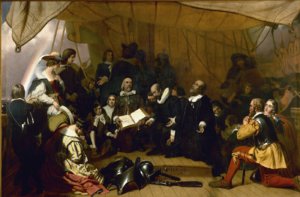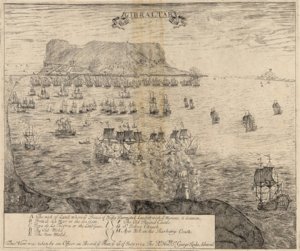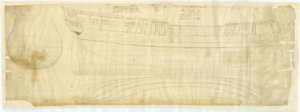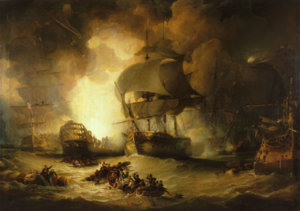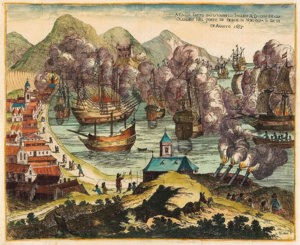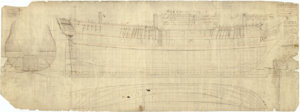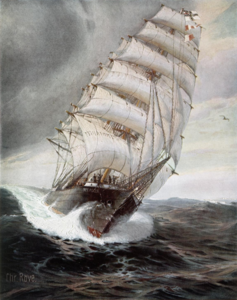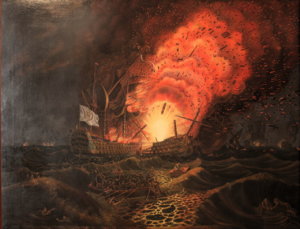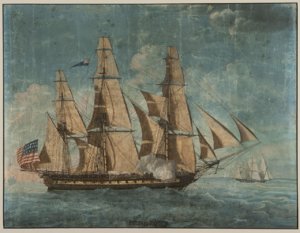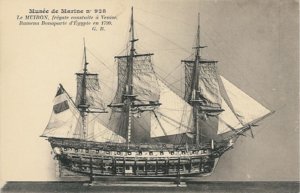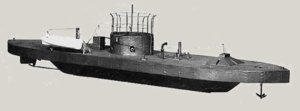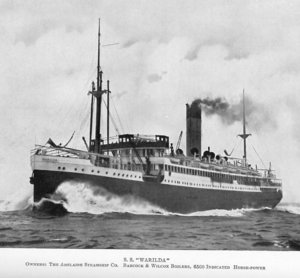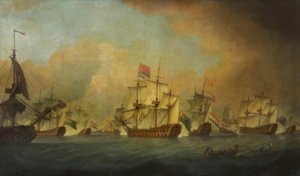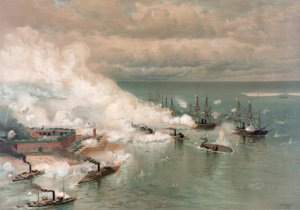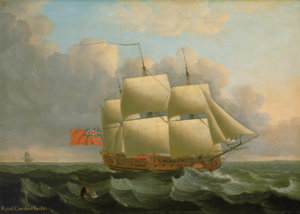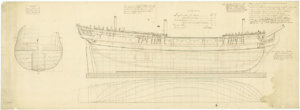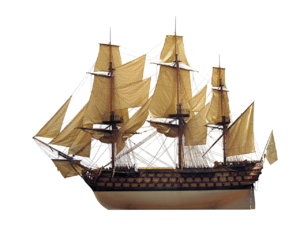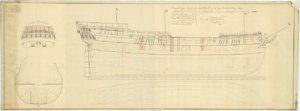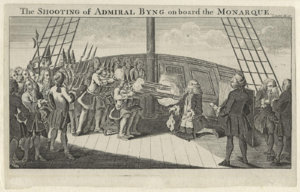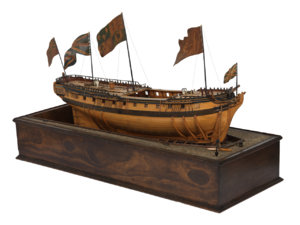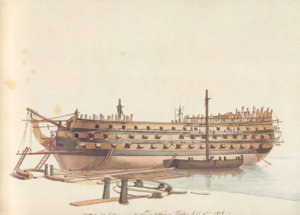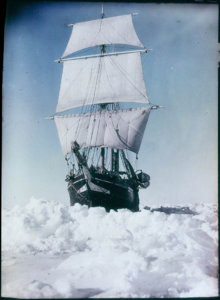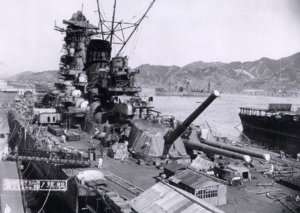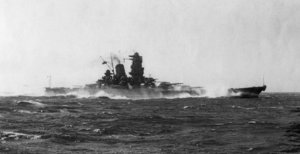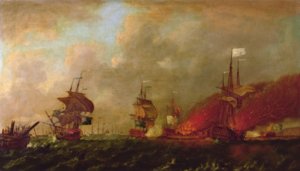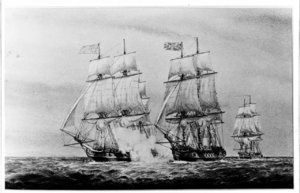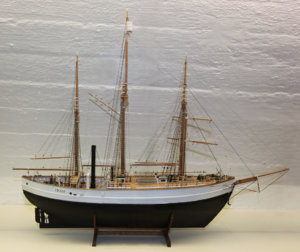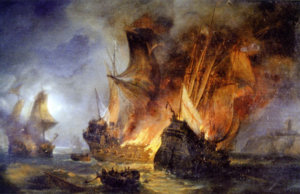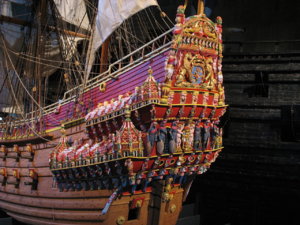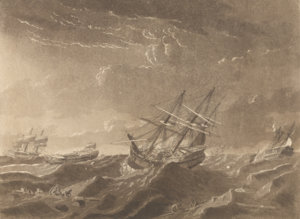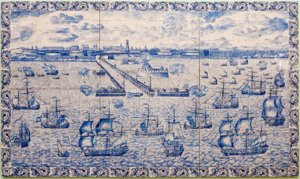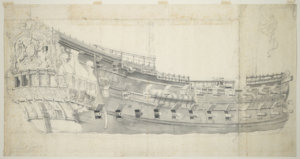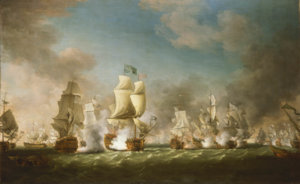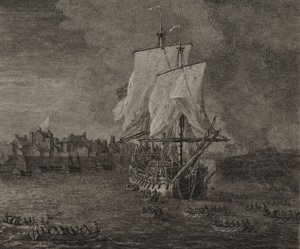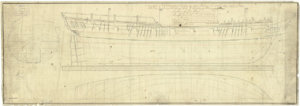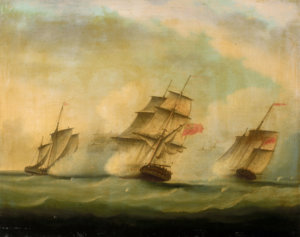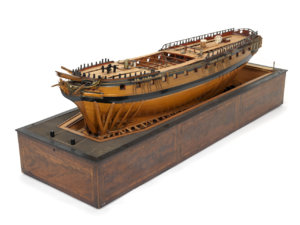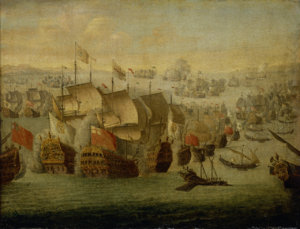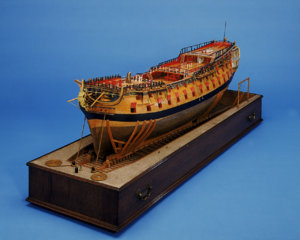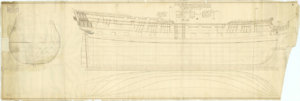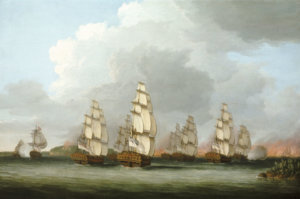Today in Naval History - Naval / Maritime Events in History
6th of August
please go to.....
3 August 1918 - hospital ship HMAT Warilda was torpedoed by the German submarine and sunk HMAT Warilda (His Majesty's Australian Transport) was a 7713-ton vessel, built by William Beardmore and Company in Glasgow as the SS Warilda for the Adelaide Steamship Company. She was designed for the...
shipsofscale.com
for example:
1622 – Birth of Tjerk Hiddes de Vries, Dutch admiral (d. 1666)
Tjerk Hiddes de Vries (
Sexbierum, 6 August 1622 -
Flushing, 6 August 1666) was a
naval hero and
Dutch admiral from the seventeenth century. The French, who could not pronounce his name, called him
Kiërkides. His name was also given as
Tsjerk,
Tierck or
Tjerck.
During the
Second Anglo-Dutch War Tjerk was appointed full captain on 27 March 1665. He commanded
d' Elff Steden in the
Battle of Lowestoft, managing with great personal courage to free his ship from an entanglement with several other burning Dutch vessels, set alight by an English fireship. This fight was a severe defeat for the Dutch and those who by their bravery set a contrast to the general incompetence shown during the battle, were hailed as heroes by the populace. Tjerk in a written report severely criticised his fallen supreme commander Van Obdam. The Frisian admiralty board, in need to replace the also killed Lieutenant-Admiral of the Frisian fleet,
Auke Stellingwerf, and sensing the public mood, appointed Tjerk Lieutenant-Admiral of Frisia on 29 June 1665. He thus jumped two ranks, not an uncommon occurrence for the Dutch navy in that century.
Normally the Frisian fleet was rather small, but in view of the emergency the province made a strong war effort, building 28 new vessels, Tjerk supervising the formation of the strongest naval force Frisia would ever send out..........
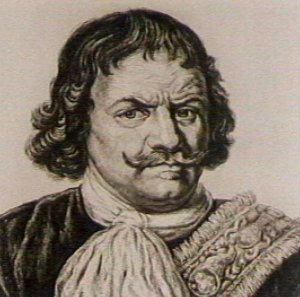 1666 – Death of Tjerk Hiddes de Vries, Frisian naval hero and commander (b. 1622)
1666 – Death of Tjerk Hiddes de Vries, Frisian naval hero and commander (b. 1622)
.....In the
Four Days Battle of 1666, Tjerk, now calling himself
De Vries ("The Frisian"), was second in command in the squadron of the Zealandic Lieutenant-Admiral
Cornelis Evertsen the Elder. When the latter was killed on the first day, Tjerk became the squadron commander, still using as flagship his
Groot Frisia. He specially fought well on the last, fourth, day, strongly contributing to the Dutch victory. Six weeks later during the
St James's Day Battle he was killed, second in command of the van under Lieutenant-Admiral
Johan Evertsen, when this squadron failed to reform a proper keel line after a calm and was mauled by the line of Admiral
Rupert of the Rhine. Tjerk had an arm and a leg shot off, yet still in vain tried to rally his force. His crippled ship drifted away, only discovered by the Dutch rear under
Cornelis Tromp the next day. The wounded Frisian admiral was speedily brought ashore in Flushing by a yacht but died from his wounds on his birthday, 6 August 1666.
After his death
Tjerk Hiddes is buried in the
Grote Kerk of Harlingen; his grave memorial has been destroyed. Four days after his death his son Tjerk Hiddes the Younger was born, who shortly after his birth was promised a future captain's commission by the admiralty to honour the memory of his father. Tjerk junior would indeed become a naval captain. Hiddes de Vries was succeeded as Lieutenant-Admiral of Frisia on 16 March 1667 by Baron
Hans Willem van Aylva.
Tjerk in the 18th and 19th century gained in fame as a Frisian
folk hero. In 1932, a Dutch writer wrote a book about him:
Tierck Hiddes, de Friesche zeeheld.

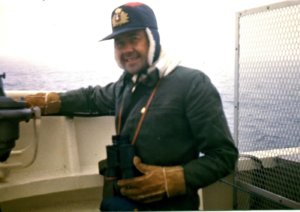 that evening, because I was on watch!
that evening, because I was on watch!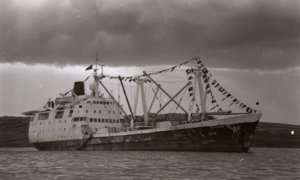
 that evening, because I was on watch!
that evening, because I was on watch!




